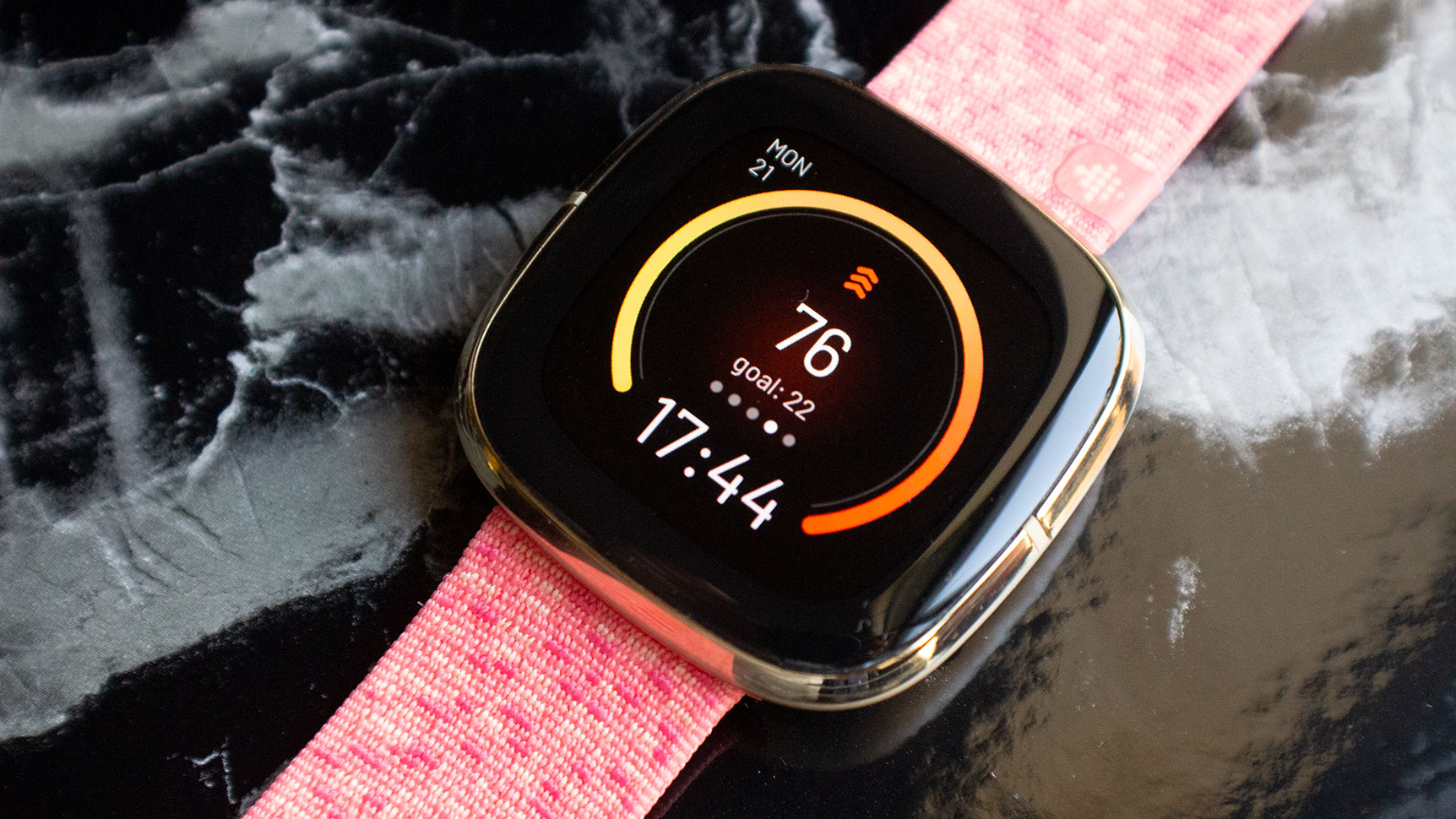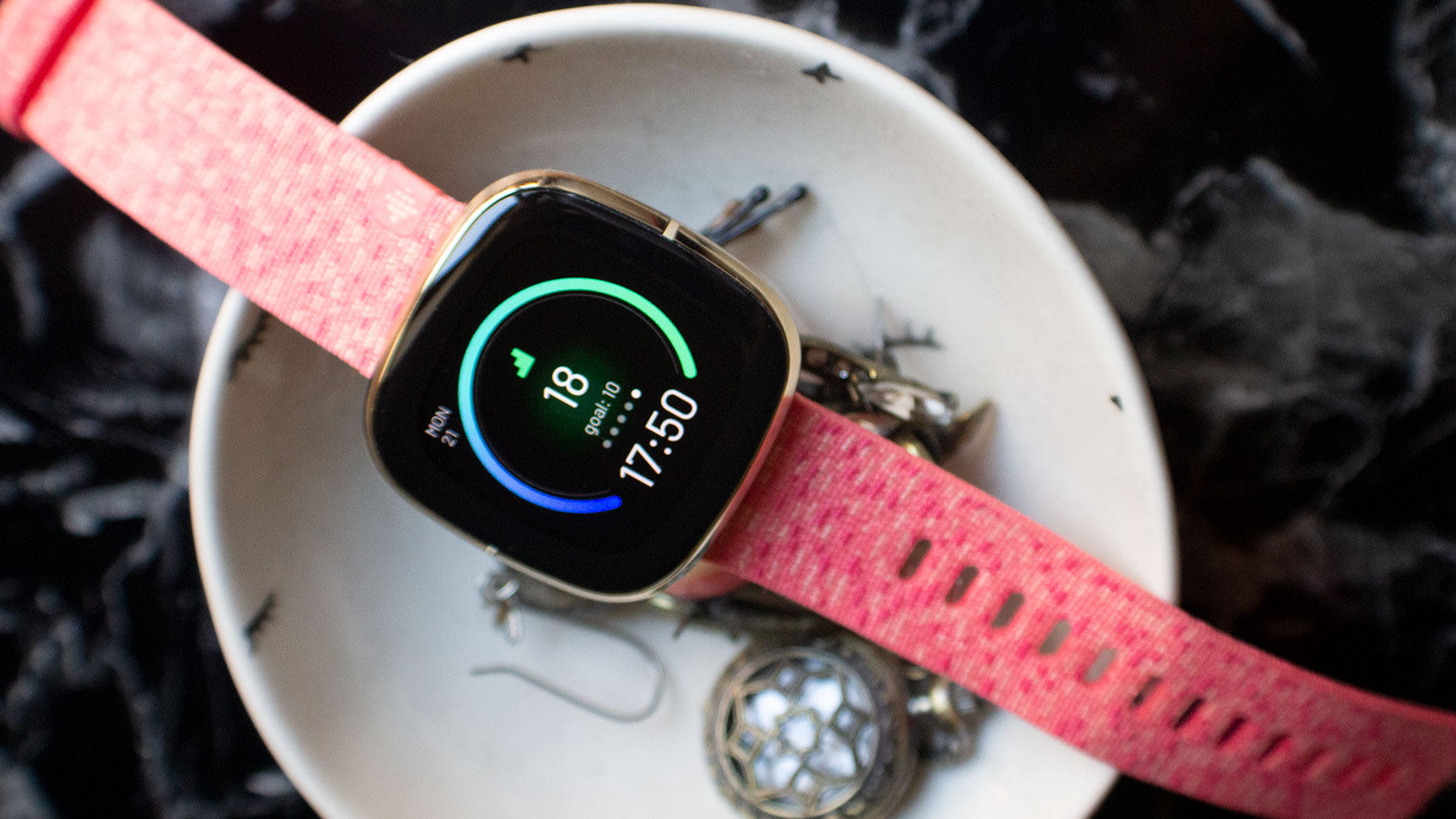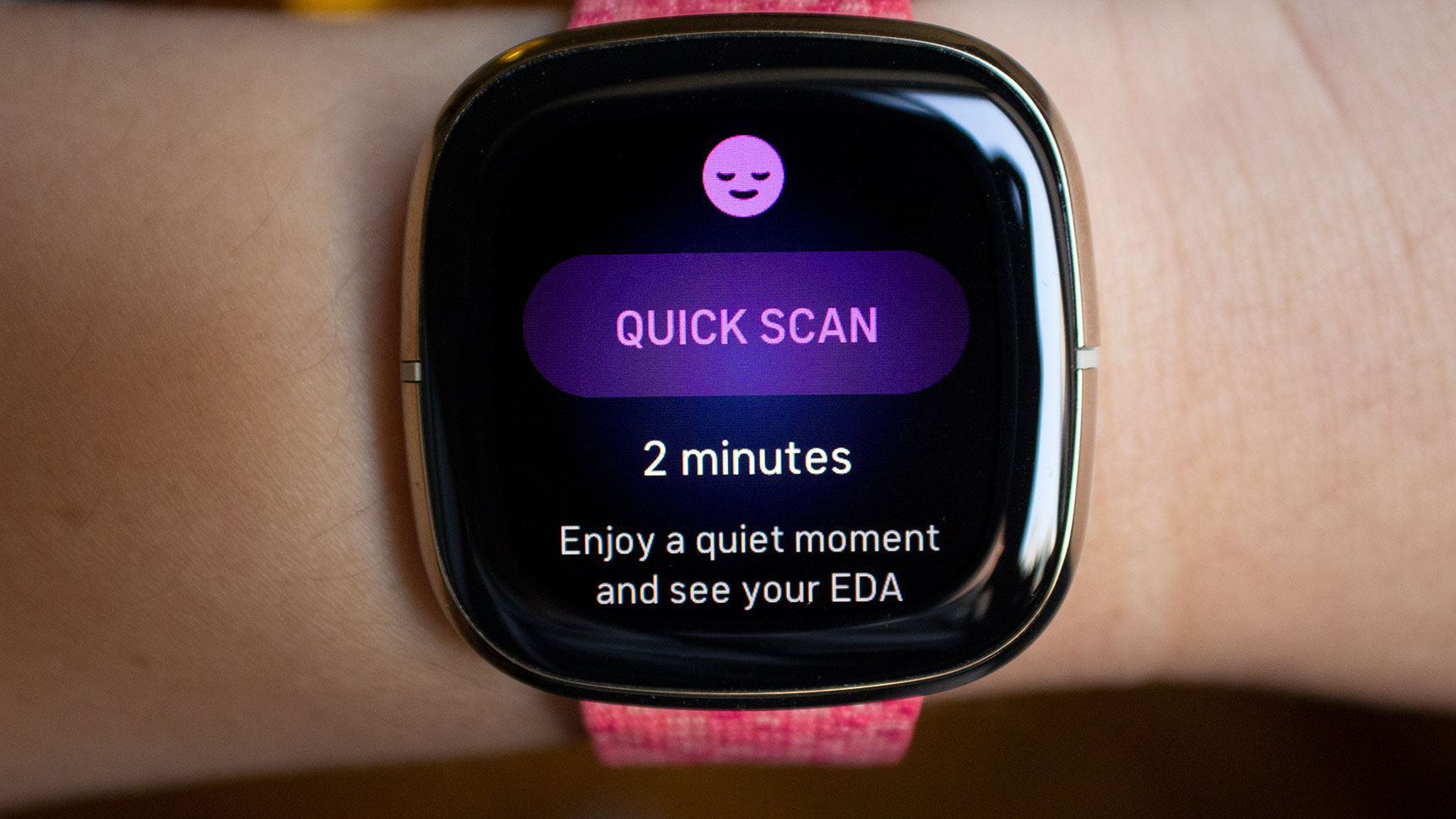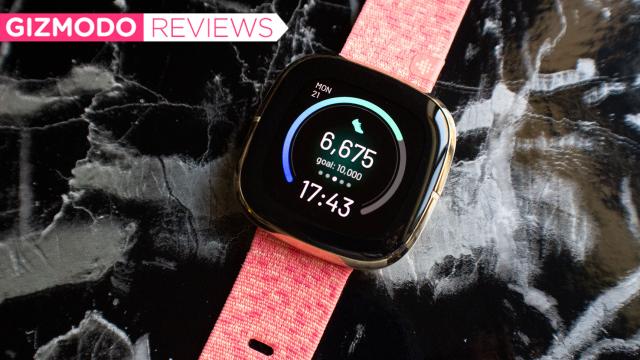The Fitbit Sense is a smartwatch that has a lot to prove.
After a pretty lacklustre 2019, which ended with Fitbit getting acquired by Google, it seemed like the wearables company was in a rut. It was pumping out iteration after iteration of its popular Versa smartwatch like there was no tomorrow, even as competitors began to leave Fitbit in their dust. On the high end, Apple and Samsung keep adding more advanced health features and impressive software updates to their platforms. On the low end, companies like Xiaomi and Huami are producing decent, extremely cheap fitness bands that undercut even the most basic Fitbits.
Among hardcore fitness heads, Garmin and Polar continue to have an edge thanks to their advanced GPS features and in-depth metrics. Autumn 2020 brought us the Charge 4, a solid yet iterative update to Fitbit’s other popular line of trackers. However, the Charge 4 alone wasn’t enough to change Fitbit’s fortunes.
But Fitbit’s spring event was nothing short of a guns-blazing miracle and at the centre of it was the $499.95 Fitbit Sense, which now replaces the tragic Ionic as the company’s premium, feature-packed smartwatch. The Apple Watch Series 6 is the gold standard that, for better or worse, all flagship smartwatches will be compared to. With the Sense, Fitbit is rising to the challenge and all but saying, “Hey, Apple. Hold my beer.”

Fitbit Sense
What is it?
Fitbit's premium flagship smartwatch
Price
$499.95
Like
Best implementation of stress-tracking so far; adds EDA sensor; low and high heart rate notifications; lengthy battery life plus fast charging; adds more advanced health metrics; improved strap design; accurate tracking
No Like
Real-time heart rate-tracking was laggy on-wrist; side button is easily triggered accidentally; always-on display zaps battery; screen not as responsive as I'd like
The Sense is a major step up from the Ionic and the Versa, and it has a lot going on. One of the biggest additions is an electrodermal activity (EDA) sensor, which measures minute changes in your sweat to determine your stress levels — no other major smartwatch currently does that. It also has a skin temperature sensor and Fitbit’s updated heart rate algorithm, Pure Pulse 2.0. Like its competitors, Fitbit is also adding heart rate variation as a metric within its app, and including low and high heart rate notifications.
The Sense promises six days of battery life and super-fast charging. Google Assistant will be coming to the Sense later this spring. Also coming later this spring is the ability to take phone calls directly on the watch. A new steel ring around the case helps to enable electrocardiograms, and Fitbit just received clearance from the U.S. Food and Drug Administration for that feature. Oh, and Fitbit has been packing SpO2 sensors for blood oxygen-monitoring in their gadgets since 2017 (though the first feature to use them didn’t drop until early 2020).
Editor’s Note: These ECG features are not currently approved in Australia.
On paper, this is a massively impressive update and could signal that Fitbit is back in the game — if it delivers. I’ve been testing the Sense for about a week and, while it’s not a complete win, this is a great smartwatch.
Let’s start with the basics. On top of the new stuff I mentioned, the Fitbit Sense also has the staples, like built-in GPS, NFC payments, and an always-on display. It’s got all the sensors you’d expect, like an accelerometer, ambient light sensor, gyroscope, altimeter, and optical heart rate sensor. You’ve also got 2.4GHz wifi, Bluetooth 5.0, a speaker, and a microphone. The only thing the Sense is missing is mobile capability.
Design-wise, the Sense is less innovative. It, like the Versa, looks like an Apple Watch — and that’s supremely boring. However, there are notable improvements. The bezel isn’t quite as thick as the Versa 2’s, and the mechanism to swap straps is much easier to use. On the right side, there’s an inductive button that serves three functions: a single press will wake the device, a single press and hold will open a shortcut that you can customise, and a double press will let you quickly access four apps of your choosing.
In terms of size, the Sense is a bit bigger and more square than the 40mm Apple Watch. The case itself measures 1.6 by 1.6 inches and is half an inch thick. I have teeny bird wrists but I found the Sense comfortable for 24/7 wear and during exercise.
Before I dive into the new features, however, a quick note: I wasn’t able to test Fitbit’s ECG app, Google Assistant, or taking calls on the wrist.

The real star of the Fitbit Sense is the EDA sensor and the stress-tracking it enables. You swipe to the EDA Scan App, place your palm over the Fitbit’s display, and sit still. A quick scan takes about two minutes, but you can do a guided session for up to 60 minutes. (There are a handful of standard guided meditations in the app, but if you’re a Fitbit Premium member you get access to over 100.) During that time, the watch will pick up on imperceptible amounts of sweat to gauge your physical stress. This is more awkward than you think. You have to make sure a part of your palm is touching each side of the case’s metal ring. I may just be an anxious person, but waiting for the watch to buzz after two minutes felt like a lifetime.
That said, in my testing, this feature really worked. During last week’s Apple Watch event, I took a few minutes to measure my stress level in real-time during a brief 2-minute lull. I apparently was stressed! My heart rate (which is about 65-70 bpm when at rest) went from 99 bpm to 104 bpm in three minutes, and the watch recorded 15 EDA responses. The more stressed you are, the more EDA responses you can expect. A few days later, after a long run and a relaxing shower, I tried the quick scan again. My heart rate went from 82 to 81 bpm, and I had zero EDA responses. I just tried again with a longer guided meditation because my deadline writing this review is stressing me out — 17 EDA responses. It knows.

On-demand stress-tracking, while fun, isn’t the only way the EDA sensor is used. In the Fitbit app, you also get a Stress Management Score. You get ranked on a scale of 0-100, and the higher the score, the less stressed you are. The score is tabulated by looking at three separate criteria. First is responsiveness, which is a mix of your heart rate variability (HRV), elevated resting heart rate (RHR), sleeping heart rate above your RHR, and measurements from the EDA sensor. Second is your physical exertion: your daily steps, tracked activities, and fatigue. The last criteria is your quality of sleep. This is very reminiscent of the “readiness” metric featured in recovery trackers like the Oura Ring and Whoop. Over the past week, I’ve found my numbers accurately reflect how well rested I feel physically. What I think Fitbit does better than everybody else is give you the option to log how you feel emotionally, as you can feel pretty crappy even if your body is in tip-top shape. This ability to log your emotions, understand how that stacks up against your physical response, and access mindfulness sessions in a single app is the most holistic and thoughtful approach to stress-tracking I’ve seen, and is way more useful than the standard, annoying reminders to breathe.
Some of the other things the Sense now tracks, however, are more passive. The Health Metrics tile now lets you track your breathing rate, HRV, skin temperature, oxygen saturation (SpO2), and resting heart rate. What I like here is that Fitbit gives you a little explainer on each, so you get a fairly good sense of why you might want to pay attention to these metrics. That said, you’re mostly doing this to better understand your baseline over time. Tracking your skin temperature night after night and comparing it to your overall sleep score might give you better insight into how the temperature of your room affects your sleep. For example, the Sense said my baseline dropped by 2.6 degrees Fahrenheit — and yes, I woke up several times because I was cold and therefore got a shitty night’s rest. That’s cool, but I’m not sure the average user will intuit that, as this type of data interpretation isn’t presented in an easily digestible way. For now, this is a Premium feature, but Fitbit says that it will be coming to all users with compatible devices in the coming months.

However, all these advanced sensors and metrics do hint Fitbit may have big plans in the future when it comes to illness detection. Preliminary results from its covid-19 study were also presented at the Sense’s launch, and metrics like skin temperature, breathing rate, and HRV are metrics that several studies have pointed to as being potentially useful in detecting infectious diseases.
Battery life, as usual for Fitbit, was good. I didn’t get quite six days on a single charge — I got around 4.5 before I had to break out the charger. That said, I did do at least 4 hours of GPS workouts during that time so that’s still pretty impressive. A 30-minute GPS run also drained my battery by about 5%, so overall given my heavy usage, it makes sense I got a few days less. I’m ok with that because Sense also charges quite quickly. Fitbit says that you can get a whole day’s worth of charge in just 12 minutes. I put that to the test and went from 32% to 52% in 12 minutes.
This is all truly impressive, but like I said earlier, the Sense isn’t perfect. There were a few quirks that I didn’t love while testing.
Most of my gripes are small, and not necessarily dealbreakers. I customised the side induction button to launch a shortcut for running workouts — and just by moving my wrist normally, I launched at least 15 running workouts by accident. It wasn’t a big deal, but I did have to go delete each of them from the app. Another quibble I had was I found the screen wasn’t quite as responsive as I’d like. Sometimes swipes didn’t register. Other times, it felt like the screen lagged. This isn’t unique to the Sense, though — it’s a problem with the Versas too. (As is the absurdly long time it takes to install a new clockface.) The always-on display zaps your battery life quite significantly, to the point where I felt I had to turn that feature off. The Sense also introduces yet another proprietary charger. I get that this is likely due to the new sensors, but if you’re thinking of upgrading from an older Fitbit, know that your current chargers won’t carry over.

My “biggest” problem with the Sense, however, was heart rate-tracking during exercise. This may be due to the new Pure Pulse 2.0 algorithm, but in general, my workouts had average bpm readings that were about 5 bpm lower than my Apple Watch SE and the Polar H10 chest strap. That’s not that serious of a change. However, I did notice that sometimes the Sense lagged by as much as 10-15 bpm compared to the Watch SE and Polar H10. This wasn’t uncommon in the early days of wearables testing, but I can’t remember the last time I saw two trackers that were more than 5 bpm apart in real time.
This lag didn’t occur all the time, or even in every type of exercise. I only encountered it while running outdoors. Upon reviewing my heart rate data after my runs, however, the graphs from the Fitbit Sense, Apple Watch SE, and Polar H10 corresponded with each other. That leads me to believe Fitbit’s exercise app might struggle to keep up with real-time data for certain exercises. For instance, I didn’t have this problem with strength training, walks, or yoga sessions. This isn’t going to be a problem for everyone, but if you are someone who trains according to heart rate zone, it’s not ideal. I’ve asked Fitbit whether this might be an exercise app issue, but have not yet received a response. Regardless of whether it’s an algorithm or app issue, it’s more of an inconvenience than a sign the Sense is irredeemably inaccurate.
Otherwise, I found Fitbit’s distance-tracking to be accurate and on par with the Apple Watch. I did five test runs with the Sense, and for each, it was within 0.08 km of the Apple Watch SE and 1.6 km of my running app. For example, a 3.6 km run recorded on my phone registered as 3.57 km on the Sense and 3.58 km on the Apple Watch SE. Another 4.6 km run on my phone was logged as 4.49 km on the Sense and 4.5 km on the Watch SE. Likewise, both the Watch SE and Sense logged a 2.09 km walk recorded by my phone as 2.09 km.

At $499.95, the Fitbit Sense is fairly well priced for what it offers.
It’s platform-agnostic, has an SpO2 sensor, a skin temperature sensor, multi-day battery life, and the best stress-tracking I’ve seen thus far thanks to the EDA sensor. The other FDA-cleared ECG watches — the Samsung Galaxy Watch 3 and Apple Watch Series 6 — both start at $550+ for GPS-only versions, with mobile versions costing even more. And soon the Sense will have Alexa and Google Assistant, which are both better than Bixby and Siri in terms of usefulness. It also blows these two rival smartwatches out of the water with regard to battery life. While the Sense is much better with Fitbit Premium, which costs $15 a month, you get six whole months free with purchase. (It’s also pretty good without paying for that subscription.)
For under $550, the only other comparable options are the Apple Watch SE and the Samsung Galaxy Watch Active2. The base models for both are cheaper at around $429, while the mobile version of the SE costs the same at $550 and the Active2 costs a bit more at $549. And here, it’s a calculation of which features you prioritise. The Active2 has mobile and a beautiful design. The Apple Watch SE also offers mobile, plus all the perks of the Apple ecosystem. And the Sense sports superior stress-tracking, the best battery life, and the best social community. But any way you look at it, the Fitbit Sense should be near the top of your list if you’re considering a full-featured smartwatch.
At the end of the day, this is a breath of fresh air from Fitbit and it’s truly wonderful to see them pushing the wearables space forward again. I’ll have to see how the Sense handles forthcoming features like the ECG before I can declare this an absolute win for Fitbit (and this feature may not be available everywhere) — but based on my experience so far, the Sense is a Hail Mary that may well pay off.
README
- Fitbit’s most ambitious smartwatch in years!
- Adds electrodermal activity sensor to measure physical stress and skin temperature sensor. Also introduces new advanced metrics like HRV and breathing rate, plus low and high heart rate notifications.
- Mindfulness and stress-tracking is among the best currently available.
- Adds Google Assistant and calls on wrist.
- Reasonably priced for the feature set at $499.95; only thing it’s really missing is mobile capability.
- Accurate tracking, though had some laggy heart rate-tracking on wrist in the exercise app.
